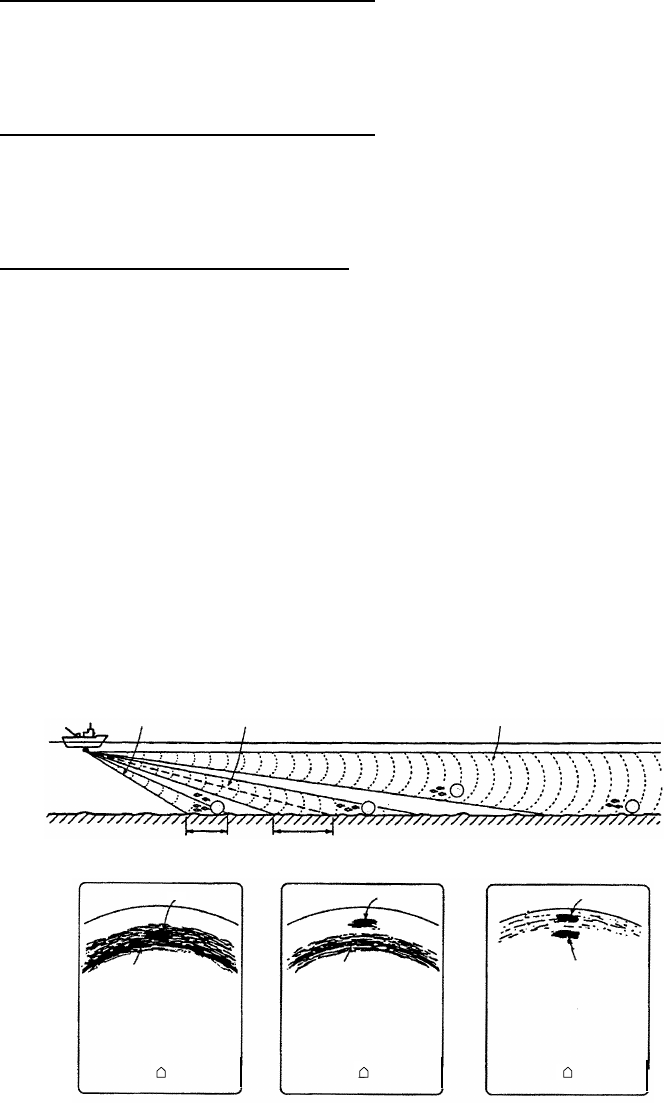
1. OPERATIONAL OVERVIEW
1-12
1.4.2 Bottom and tilt angle
Finding the proper tilt angle is of utmost importance when searching for fish,
especially in coastal water fishing, where the depth of the fishing ground is from
50-100 m. In this type of fishing ground it is imperative that the bottom echo be
always displayed to properly distinguish between fish and the bottom. When
selecting a tilt angle, keep the following points in mind.
Case 1: Tilt angle 30 to 40 degrees
This tilt angle uses the full beamwidth to receive echoes, thus the entire bottom
echo is displayed. Fish echoes may be hidden in the bottom echo.
Case 2: Tilt angle 10 to 20 degrees
This tilt angle receives bottom echoes within the bottom half of the beam. Fish
echoes astern of the bottom echo are displayed.
Case 3: Tilt angle 0 to 5 degrees
This tilt angle may or may not display returning echoes. Fish echoes near the
bottom echo are displayed.
1.4.3 How to discriminate fish echoes from the bottom
The following figure illustrates how two fish schools (a) and (b) are displayed on
screen using three different tilt angles.
Case 1: Tilt angle 30 to 40 degrees
Fish school is obscured by the bottom echo.
Case 2: Tilt angle 10 to 20 degrees
Fish school is located above the bottom echo (midwater).
Case 3: Tilt angle 0 to 5 degrees
Fish school is located close to the bottom echo.
Case 1 Case 2 Case 3
Fish school (a) Fish school (a) Fish school (a)
Bottom Bottom
Bottom
(b)
Case 1 Case 2 Case 3
a
b
a
a
How to discriminate fish echoes from bottom


















